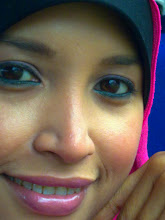 The most common cancer and the number one cause of cancer deaths among women in Malaysia is breast cancer. This cancer is caused by an uncontrolled growth of cells within the breast tissue.
The most common cancer and the number one cause of cancer deaths among women in Malaysia is breast cancer. This cancer is caused by an uncontrolled growth of cells within the breast tissue.
If not detected and treated promptly, breast cancer can metastasise, spreading to the lymph glands and other parts of the body, including lungs, bones and liver.
Who is at risk?
All women above the age of 20 are at risk of developing breast cancer. There are a number of risk factors that have been identified.
Some of these factors include:
* Age – the risk of developing breast cancer does increase with age. In fact, 70 per cent of breast cancer cases occur in women aged 50 and above.
* Family history – women who have a mother, sister or daughter who developed breast cancer before the age of 50 are at a higher risk. This risk is further heightened if a woman has more than one immediate family member who has breast cancer.
* Previous history – women who have already been treated for cancer in one breast have an increased risk of developing cancer in the other.
* Early menstruation (before the age of 12) or late menopause (after the age of 50).
* Never having a full-term pregnancy or giving birth after the age of 30.
* Not having breast-fed.
* A diet high in fat and low in fibre.
* Obesity in post-menopausal years.
* Excessive alcohol consumption.
Great importance has been placed on the early detection of breast cancer.
There are basically four methods of early detection.
Breast self-examination (BSE) – Through BSE, you familiarise yourself with your breasts and this makes it easier for you to notice any changes. It is recommended for women aged 35 and below and should be done once a month, between the seventh and 10th day after the start of menstruation. For non-menstruating women, BSE should be done at the same time every month. For women above 35, it is advisable to be examined by a doctor every year.
Reporting of breast changes – Any unusual changes to your breasts – even after a mammogram – should be reported to a doctor, as these changes may indicate an early warning sign. This includes the symptoms listed below.
Breast examination by a doctor – For women 35-years-old and above, an annual breast examination by a doctor is recommended. If you are going for a mammogram, it would be a good idea to schedule a breast examination by a doctor.
Mammography (x-ray of the breast) – This method can detect breast cancer even before any lumps can be felt. It is especially useful for women between the ages of 50 and 69, and it is recommended that a mammogram be scheduled once every two years. For younger women, because their breast tissue is denser, the accuracy of a mammogram becomes less certain.
Symptoms of breast cancer
These are often the first indicator that breast cancer may be present.
You should look out for:
* A lump in your breast that persists after your period.
* Bleeding or discharge from the nipple.
* Change in the shape of the breast.
* Puckering or dimpling of the skin of the breast.
* New retraction (pulling in) of the nipple.
If you see or experience any of these changes, please see your doctor immediately.
Treatment
The earlier breast cancer is detected, the higher the chances of complete and successful treatment.
This may involve:
* Surgery – this removes the cancer and some surrounding normal tissue to ensure a margin of safety. There are two ways of doing this:
* Lumpectomy – only a small or affected section of the breast is removed.
* Mastectomy – here, all the breast tissue is removed. With this type of treatment, a woman can opt to have breast reconstruction to surgically rebuild the breast.
* Radiotherapy – high-powered x-ray waves are directed at the cancer site and surrounding tissue to help destroy any remaining cancer cells.
* Chemotherapy – this requires the use of drugs or hormonal therapy to help destroy any remaining cancer cells.
To achieve the best outcome, doctors sometimes recommend a combination of therapies.
Can you fight breast cancer?
As breast cancer can be easily detected, you can do your bit to ensure that if it develops, it is detected and treated early. Most women with early breast cancer go on to live long, healthy and normal lives.














